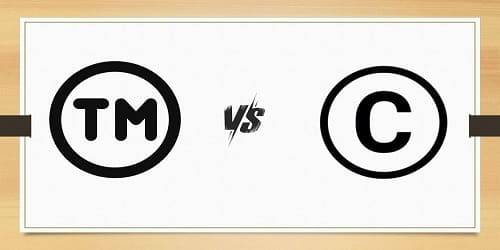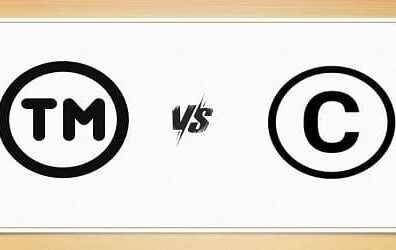
Introduction
Intellectual Property Rights (IPR) play a pivotal role in protecting the creations of individuals and businesses in India. Among the various forms of IPR, trademarks and copyrights are crucial for safeguarding different types of intellectual property. Although both offer legal protection, they cater to distinct purposes and apply to different categories of creations. This article will help you easily understand the differences between trademarks and copyrights.
What is a Trademark?
A trademark is any symbol, word, phrase, design, or combination thereof that uniquely identifies and distinguishes the source of goods or services from one entity to another. The primary purpose of a trademark is to protect the brand identity by ensuring that others do not use similar marks that could confuse consumers about the origins of products or services.
Examples of Trademarks:
- Nike’s “Swoosh” Logo: Represents the athletic apparel company, Nike.
- Apple’s Bitten Apple Logo: Symbolizes the technology giant, Apple.
- McDonald’s “Golden Arches”: Distinguishes the fast-food chain, McDonald’s.
What is a Copyright?
Copyright is a legal right that grants creators of original works exclusive control over their use and distribution. This protection typically covers a wide range of creative works, such as literary, dramatic, musical, and artistic pieces, allowing creators to manage and benefit financially from their creations.
Examples of Copyrighted Works:
- Books, Poems, and Articles: Literary creations by authors and writers.
- Movies and TV Shows: Cinematic works created by filmmakers.
- Music Compositions and Recordings: Musical works by composers and artists.
- Paintings and Sculptures: Artistic pieces created by visual artists.
Trademark vs. Copyright
Below is detailed difference between trademark and copyright:
Sl No. | Particular | Trademark | Copyright |
1 | Scope of Protection | Protects brand names, logos, taglines, slogans, and other symbols that identify the source of goods or services. | Protects original works such as books, music, photos, and artwork. |
2 | Purpose | Ensures consumers can identify the origin of products and services, preventing confusion and brand dilution. | Protects the expression of ideas, allowing creators to control and benefit from their works. |
3 | Applicant | Can be registered by any person or entity for their brand or logo used in respect of their goods or services. | Can be registered by authors, music composers, producers, directors, software developers, photographers, etc. |
4 | Duration | Valid for 10 years from the application date and can be renewed indefinitely if continuously used. | Valid during the author’s lifetime plus 60 years after their death. |
5 | Relevant Act | Governed by the Trade Marks Act, 1999. | Governed by the Copyright Act, 1957. |
6 | Examples of Use | Used on products, packaging, advertising, and promotional materials to signify the source of goods or services. | Applied to creative works like literature, music, art, and films, protecting the content from unauthorized use. |
7 | Symbol | Use ™ when a trademark application is filed but not yet registered, and Ⓡ when registered. | Use © when a copyright is registered to indicate protection. |
8 | Registering Authority | Applications are submitted to the Controller General of Patents, Designs, and Trademarks. | Applications are submitted to the Copyright Office under the Department for Promotion of Industry and Internal Trade. |
Why Understanding the Difference Between Trademark And Copyright Matters
Recognizing the difference between trademark and copyright is crucial for effectively protecting your intellectual property. Trademarks are essential for safeguarding your brand identity, ensuring that consumers can distinguish your products and services from those of competitors. Copyrights, on the other hand, protect your creative works, granting you control and the ability to profit from your original creations. In some cases, it may be necessary to obtain both trademark and copyright registrations for the same work, such as registering the name of a movie under a trademark while protecting the movie itself through copyright.
Conclusion
In conclusion, trademarks and copyrights serve distinct but complementary roles in the realm of intellectual property protection. Trademarks secure brand identity by protecting names, logos, and slogans, while copyrights protect original works of authorship, such as books, music, and art. Understanding these differences is key to ensuring your intellectual property is adequately protected and utilized.
Follow Us
Keep Yourself Updated By Following Us





